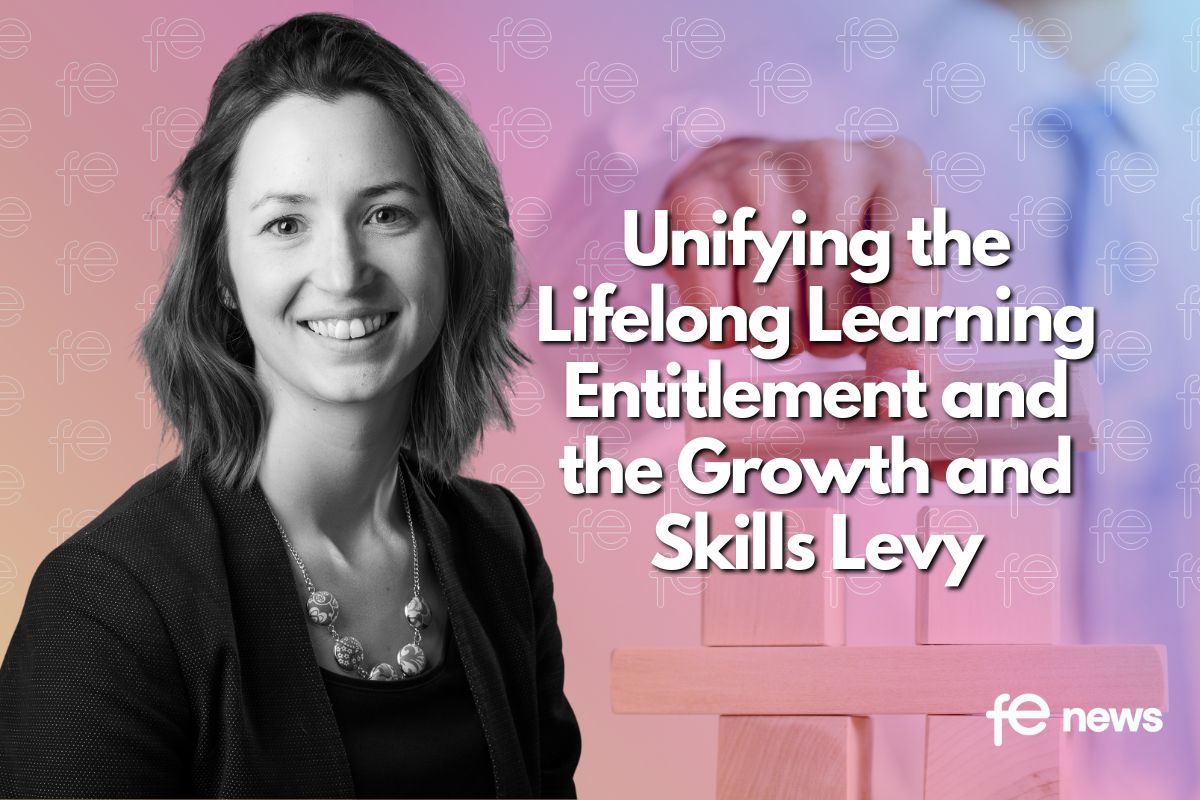Kirklees College Executive Director of HR heads back to class!

It’s not every day you get to try your hand at plumbing, plastering and brickwork and go back to class to experience what life is like as a construction student – but this is exactly what I got to do, taking me out of my HR comfort zone to get my hands well and truly dirty.
After arriving on site, I was kitted out with a lovely pair of navy overalls, steel toe capped boots (pink laces), yellow Hi-Viz jacket and safety glasses and could barely get through my cup of tea before it was off to my first lesson – Level 2 Plumbing with Sarah Tully.
I joined a large group of young men in their first year all learning the trade. I was impressed at how engaged, on task, and well behaved they all were, showing great respect to Sarah who clearly had a very good rapport with the group. I started my task straight away – learning how to do a 15mm machine bend – shaping a 15mm copper pipe to a 90-degree angle using a scissor bender tool.
After completing my template for the bend, I went for a wander round the workshop and chatted to everyone asking them what they were doing and what all the different attachments and joints they were using were for. They were all knowledgeable and seemed to carry out their tasks with enthusiasm and ease.
I was then swiftly escorted to my next lesson – Plastering Level 2 with Scott Stevenson. Scott is a relatively new member of the team and joined the college as a Part time tutor and then in January this year moved onto our Taking Teaching Further programme – a programme which is designed to attract industry experts into teaching roles.
Scott is a truly inspirational teacher. I overheard him encouraging one of the students to aim high and was sharing his own experience of leaving school with no qualifications but went on to have his own successful plastering business and is now teaching, passing on his knowledge to the next generation of plasterers.
The department is fortunate to have the majority of the plastering materials donated from companies such as British Gypsum. Without these donations, and the employer contacts made by the dedicated teams, it is clear with the limited resources we have, the students wouldn’t receive such a rich experience on their programmes.
Before we started, we had to clean and grease the work bench using hessian and animal fat. The reason for doing this we were told is so the finished cast can easily be lifted of the bench. We got to work with our first task – running moulds. Our task was to create a dado rail out of fine plaster. This was done by firstly mixing the plaster with our hands to a certain consistency, ensuring there are no lumps (I was very thankful for the overalls at this point), and then pouring this in a line along the edge of the work bench. We had to work very fast as the plaster starts to set very quickly.
As I said earlier, greasing the bench should have made it easy to lift the dado rail up once set. However, in my case I was a bit too heavy handed with it and it snapped in two!
After lunch, I was off to my 3rd and final lesson – Brickwork with Ian Hawkin and David Pollard. I was impressed at how well the students were getting on with their array of different tasks. Seeing everyone in action really made me appreciate what a difficult task it is for our tutors when working with such a large number of students and in such a large space, keeping them all safe and on task.
Ian came over and demonstrated what I needed to do. My task was to build a pyramid wall using a base of 4 bricks. After mastering the technique of rolling the mortar with my trowel there was no stopping me. Spirit level at the ready I assembled my wall in no time.
A few of the students came up to me at the end and commented on my wall – said it was great for a first attempt. I think Ian too was secretly impressed with my first attempt at building a wall.
I was intrigued what happened to the finished walls once the students had competed their task. What an ingenious idea- the mortar they use only consists of sand, lime and water (no cement) so the rigs are easily dismantled. David took me outside to show me how the bricks were cleaned off to re-use and the mortar re cycled. Environmentally friendly and cost effective.
“As the Senior Leadership Team member linked to Construction and Land Based studies, I felt privileged to be part of the construction team for the day and really see what life is like as a student at our construction centre. It really opened my eyes to the great work they do and the fantastic teaching standards we have,” Jane Simpson, Executive Director of Human Resources.











Responses